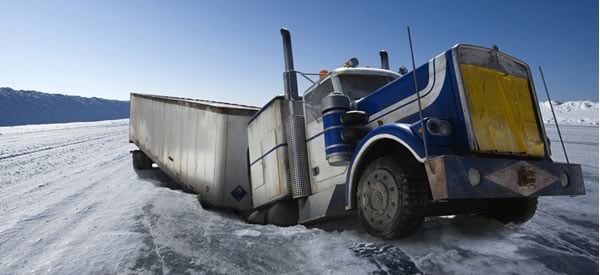
In Canada, the National Round Table on the Environment and the Economy, an independent policy advisory organization consisting of representatives from the environmental, business, and government sectors has found that the country’s northern infrastructure is not ready for the consequences of global warming in the Arctic. Infrastructure refers to everything from ice roads to dikes to emergency response services.
The NRTEE was born out of the success of the Brundtland Report, Our Common Future, which was one of the first instances in which the term “sustainable development” was defined, in this case to mean “development that meets the needs of the present without compromising the ability of future generations to meet their own needs.” The NRTEE works in this vein, advising the government on sustainable development decisions.
The panel submitted their report, entitled “True North: Adapting Infrastructure to Climate Change in Canada” to Minister of the Environment Jim Prentice. The 160-page report has been published in an attractive, reader-friendly Flash format, which you can view here.
The NRTEE concluded, “Driven by economic development and demographics and exacerbated by climate change, Canada’s North is likely to experience unprecedented pressure on infrastructure systems” (p. 109). The panel quotes a 2009 report by Environment Canada, which claimed that over C$5 trillion worth of infrastructure could be at risk due to changing climate conditions.
A weakening infrastructure
The panel identified many examples of infrastructure failure in the Arctic. Roads, communication systems, and resupply capabilities are all at risk due to warming temperatures, or simply just to sheer inadequacy even in the face of “normal” Arctic conditions. Isolated communities, harsh terrain, and treacherous travel make the Arctic a difficult region, even before global warming’s effects are taken into account.
- A dike failed at Gjoa Haven in Nunavut. There, alternative high and low temperatures in combination with heavy rainfall contributed to the dike rupture.
- A seven-day blizzard in Nunavut left grocery store shelves empty for there days – an untenable situation if Canada is seeking to increase the attractiveness and liveability of the Arctic.
- An slushy, unfrozen ice road near the Diavik Diamond Mine forced the company to airlift supplies to its remote location in the Northwest Territories. Warming temperatures mean that ice roads are often not stable enough to support trucks transporting resupply stocks, which could be a major problem for mines. Mines are one of the biggest sources of revenue in the North, particularly in the NWT, which has the highest GDP per capita in all of Canada, at C$97,923 per year.
- Melting permafrost is causing a variety of problems. When this thick layer of ice turns into water, this will “create huge new design issues for architects, engineers, and planners dealing with roads, pipelines, airports, or wildlife harvesting” (p. 6). Moreover, it will release gases like carbon dioxide into the air in possibly dangerous quantities.
- The Mackenzie Basin sits under a large portion of the proposed Mackenzie Valley Natural Gas Pipeline, which would transport natural gas from the Mackenzie Delta in the northern NWT down into the pipeline network in northern Alberta. There is a large amount of “warm permafrost” underneath the Basin, which could pose serious threats to the integrity of the pipeline if not taken into consideration (p. 49)
Both people and industries vital to Canada’s national economy are endangered by the changing climate and the shortcomings of Arctic infrastructure. Canada, of course, is not alone: poor roads, frozen rivers, and lacking infrastructure are also major problems for countries like Norway and Russia, which seek to develop their Arctic regions at the same time as conditions become more difficult.
A way forward
In order to correct inadequacies in Canadian Arctic preparedness, the panel came up with four priorities. They are:
- Integrate climate risks into existing government policies, processes, and mechanisms;
- Ensure northern interests are represented and implicated in the development of climate change adaptation solutions;
- Strengthen the science capacity and information use in the North to support long-term adapation efforts;
- Build community capacity to address climate risk to northern infrastructure and take advantage of opportunities.
News links
“Northern infrastructure unprepared for impacts of global warming: Panel,” Canwest News Service
“Warming to ‘hit roads, pipelines’ in Canada’s North,” Reuters